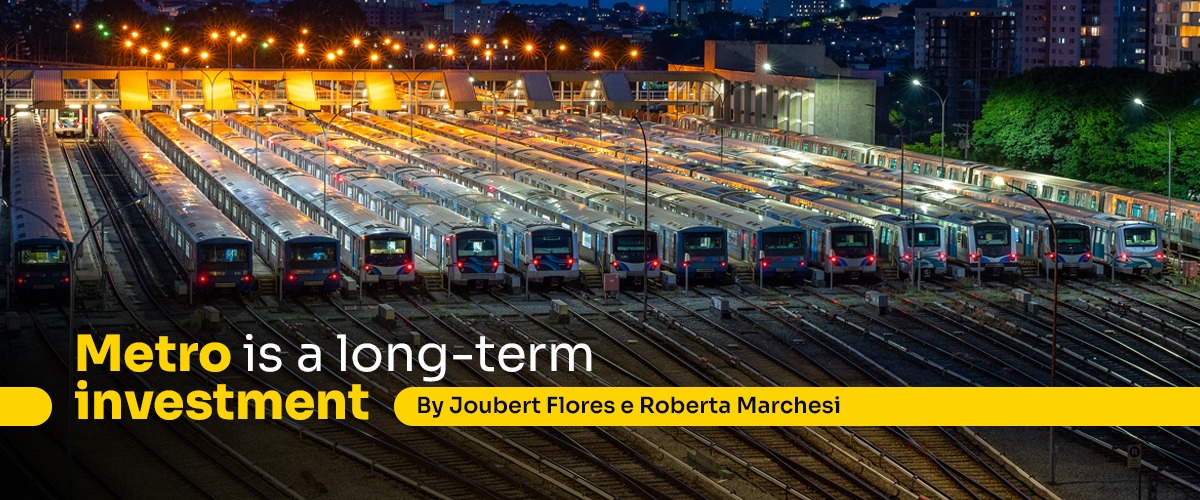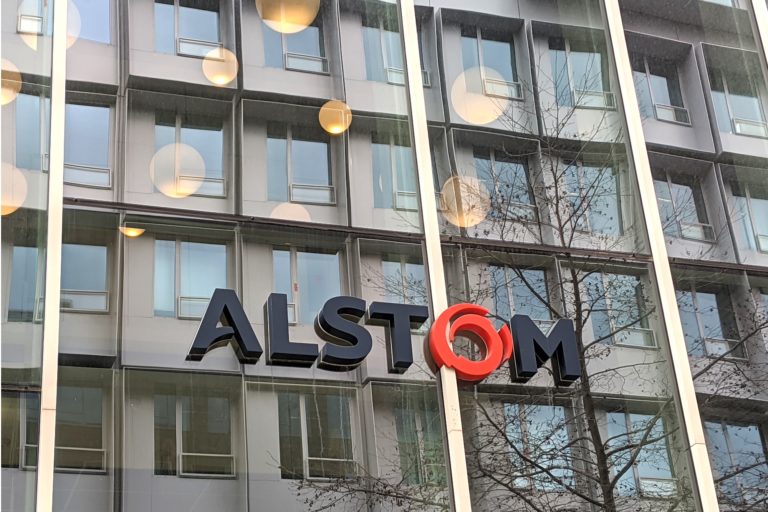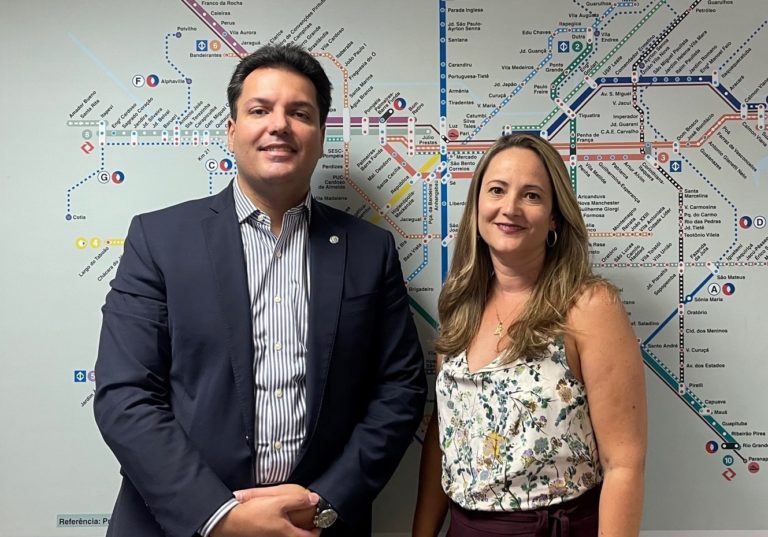By Joubert Flores and Roberta Marchesi*
You may have already heard that the cost of building a subway line is very high and the implementation period is long, but that’s not the case. One of the criticisms made of projects for new subway lines is that they cost much more expensive and take much longer to open for operation than BRT (Bus Rapid Transit) projects, which are normally installed on the surface, in strips of avenues. existing or even in exclusive lanes built for this purpose. However, this comparison fails to appreciate the comparative advantages of each mode, particularly transport capacity and quality of service. However, it is true that the implementation of metro projects, and also BRT projects, in an exclusive lane, could take less time if there was better planning, more studied projects and close supervision of contracts.
The high transport capacity provided by rail systems makes it possible to clearly perceive the benefits of this modality. A single established metro line, for example, is capable of transporting around 60 thousand passengers/hour/direction, on a single line. For comparison purposes, cars and buses have a capacity of only 1,800 and 6,700 passengers/hour/direction, respectively, per lane. BRTs can transport up to 15 thousand passengers/hour per direction per lane, requiring up to 4 lanes on important avenues to be able to transport flows with 30 thousand passengers/hour/direction. Both modes of transport are efficient, depending on passenger demand in the corridor where they are installed.
While a subway line transports around 60 thousand passengers/hour/direction without problems, using automatic signaling methods and offering services with intervals as low as 75 seconds, the BRT already has more difficulty operating during periods of high demand, as can be seen in the pioneering examples of Transmilénio (Bogotá) and Metropolitano (Lima). BRT buses are very frequent, but have to reduce speed considerably, offering a level of service quality that deteriorates significantly during times of greatest demand. And it is from this point that medium and large cities and metropolitan regions need to look for other solutions, with greater capacity, to satisfy the population’s demand for public transport.
These solutions are mainly aimed at transport on rails – subway lines, trains and Light Rail Vehicles. Therefore, both São Paulo (Brazil), Bogotá (Colombia), Lima (Peru) and other metropolitan regions that have excellent BRTs are seeking to build or have already built new metro lines. Therefore, there should not be a dispute between the systems, but a complementarity between them, depending on passenger demand, which should define the appropriate solution to be implemented.
Medium-sized cities or corridors with demand of less than 12 thousand passengers/hour/direction and with low expectations of an increase in passengers in the long term could be candidates for implementing BRT or VLT systems, a solution widely adopted in Europe and now also in the cities of Rio de Janeiro and Santos. But, for higher capacities and with the potential to increase further in the short and medium term, a metro or train solution, whether in a tunnel or viaduct, is more appropriate.
The construction of metro rail systems involves modern equipment, specialized labor and complex interfaces with the cities’ urban infrastructure, such as zoning, water, sewage, energy and telecommunications networks. A type of work that requires planning, investments and execution management. It also involves, in several cases, the expropriation of land and continuous contact with the communities involved to minimize negative impacts during construction. Given the useful life of the infrastructure, which generally exceeds 50 years, the costs are, at first glance, higher than those of a BRT, on an exclusive route. However, it must be considered that the infrastructure of the rail system stations is robust and the tracks and assets are long-lasting. Meanwhile, systems with lower transport capacity require higher costs for resurfacing roads, maintenance and recovery of stopping points and changing assets, which have a much shorter useful life. Not to mention that these systems are dependent of transit systems, contributing to the formation of long congestion in cities, which does not allow passengers to know when they will arrive at their destination.
If we overcome the superficial discussion about this comparison, which involves only the initial investment, and address the issue appropriately, considering the entire life cycle of the assets involved, or even the investment per passenger transported, we will see that the feasibility of adopting rail surpasses the implementation of any other system for high-demand corridors.
The construction of subway, train and light rail lines brings a great return to society, which goes far beyond transport. Its high capacity and longevity mean that its implementation generates immediate returns for citizens, through fast, safe and regular transport, without gridlock and without pollutant emissions, not to mention that it is powered by clean energy and contributes to sustainability of cities.
In this way, rail systems contribute to increasing mobility in urban centers, increasing the quality, safety and regularity of public transport, whilst also reducing pollution. And the higher the mobility index, the greater the social and economic development. It is important that public managers consider that increased mobility must be linked to the sustainability limits imposed by the environment, the use of energy, space and all other scarce resources for the Planet. And, from this point of view, rail transport is the best option for saving such resources.
We emphasize that the benefits of mobility on rails are known, but, without planning, cities are hostage to short-term solutions, which do not deal with fundamental issues, and do not solve the problem of mobility in medium and large centers integrated in the metropolitan region. It is necessary to overcome old practices to move forward with the implementation of public transport systems suited to the reality of demand in cities. And this involves all systems, whether BRTs or Rails!
* Joubert Flores is President of the Council of National Association of Passenger Rail Operators (ANPTrilhos), Electrical Engineer, Electrotechnician and Postgraduate in Energy Management.
* Roberta Marchesi is Executive Director of National Association of Passenger Rail Operators (ANPTrilhos), Management advisor for transport companies, Master in Economics and Postgraduate in the areas of Planning, Budgeting, Management and Logistics.
Article published in the newspaper O Tempo, November 20, 2023.




